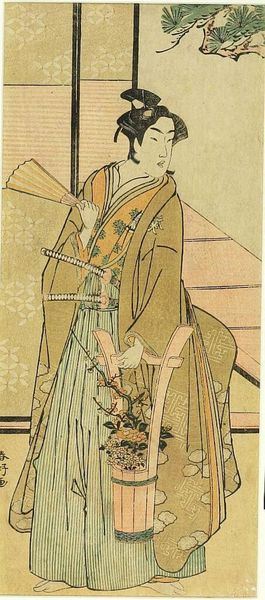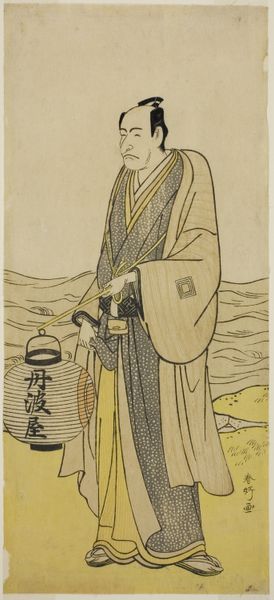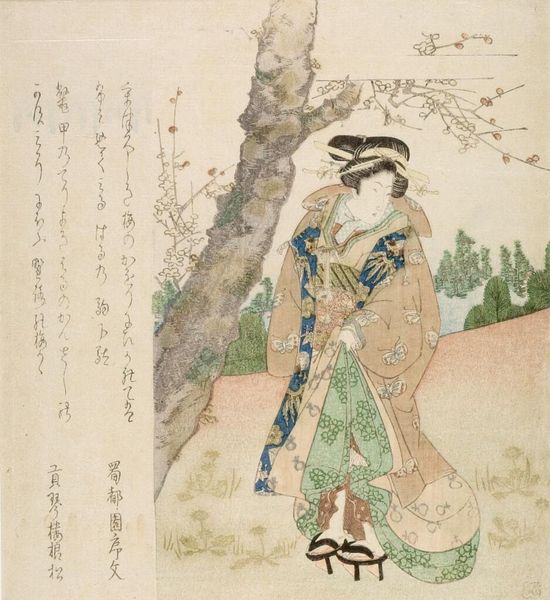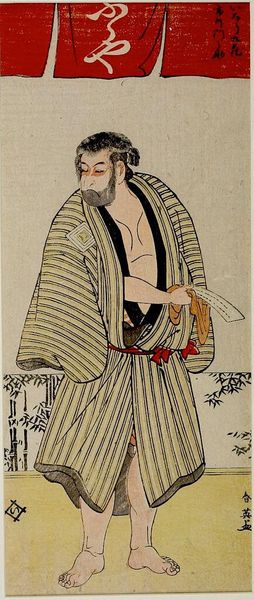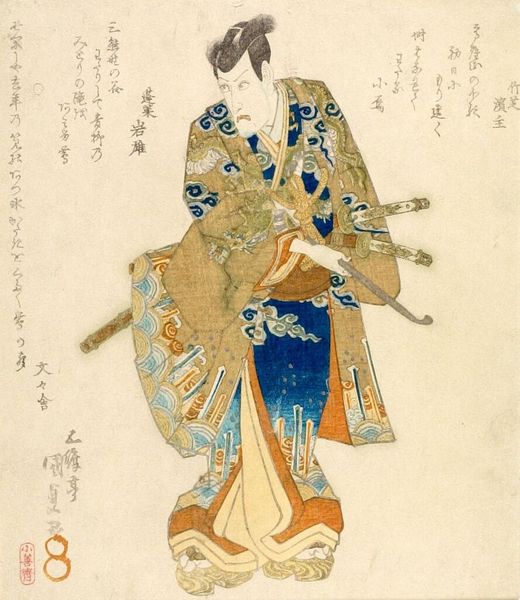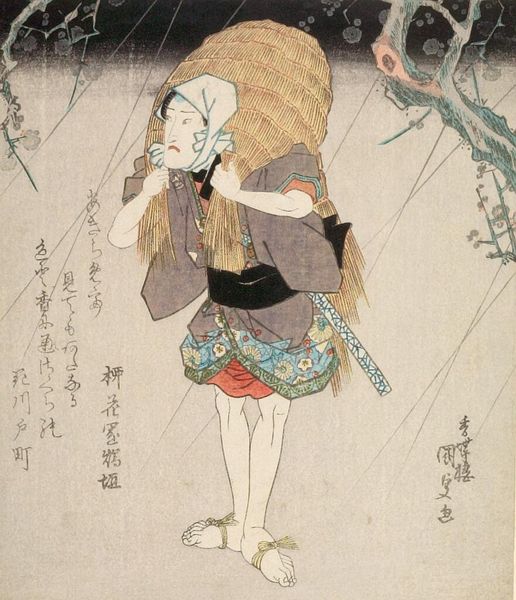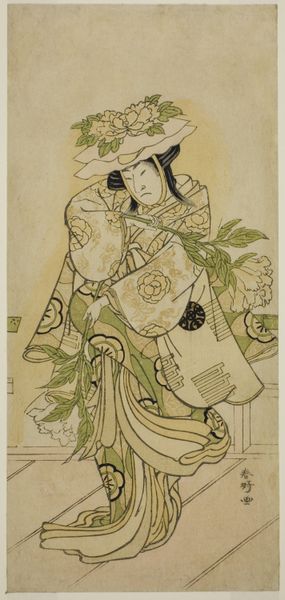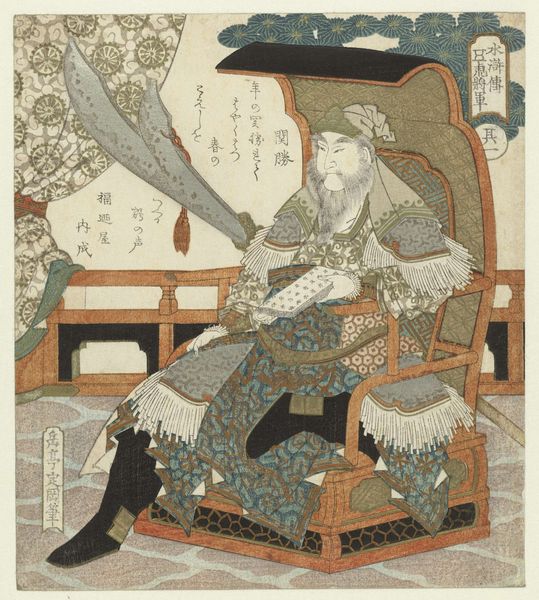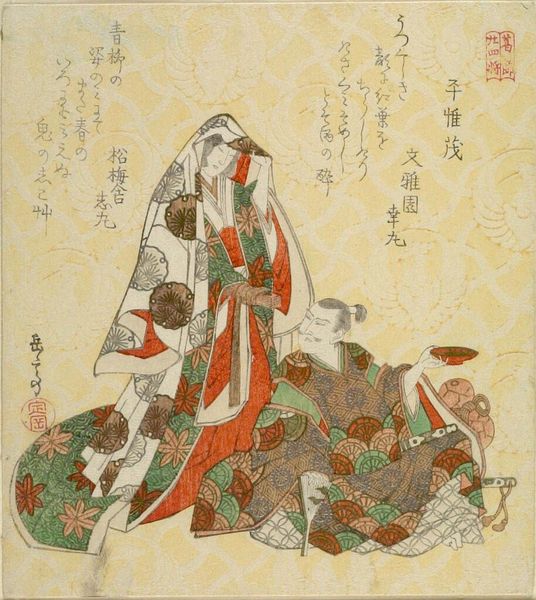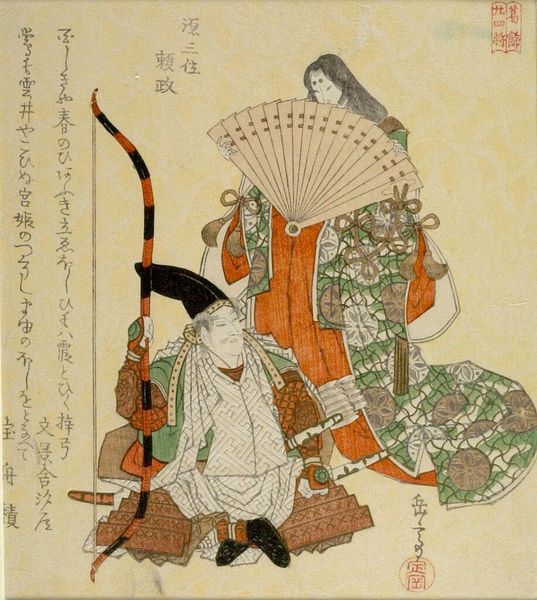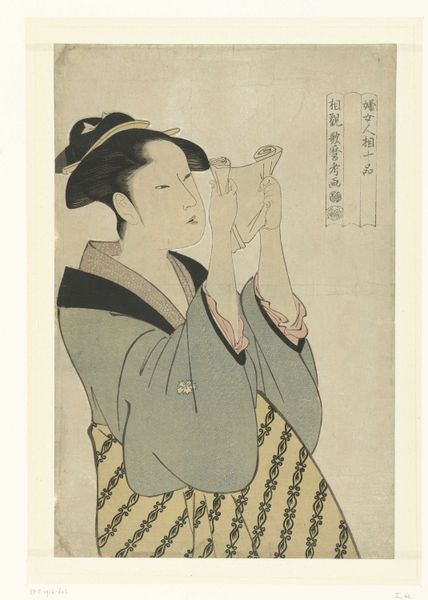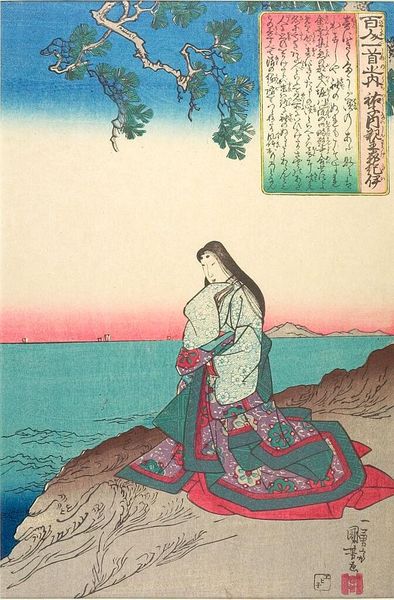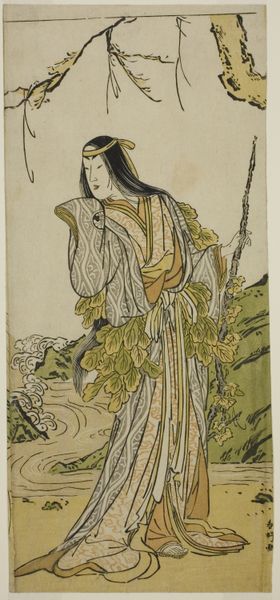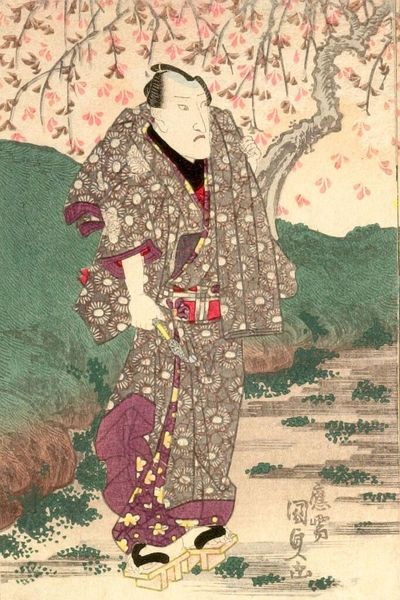
Copyright: Public domain Japan
Editor: Here we have Paul Jacoulet's 1952 woodblock print, "Le Bossu. Otaru, Hokkaido." It presents a figure that seems to be a mix of caricature and reverence, an intriguing balance. What is your interpretation of its artistic construction? Curator: Consider the interplay of line and color. Notice the defined outlines, particularly in the figure’s robe and the floral elements. Observe how the flat planes of color, reminiscent of traditional ukiyo-e, paradoxically create depth through careful tonal variation, establishing figure-ground relationships. Do you perceive a hierarchy of forms within this composition? Editor: I notice how the figure, even with the wide hat obscuring part of his face, remains central, while the background, despite its detail, seems secondary. Curator: Precisely. This establishes a structural core to the work. Think of how the formal relationships here establish a narrative: The simplification of the background brings attention to the figure, thus creating meaning within the aesthetic qualities of the work itself. This pushes beyond merely a surface representation and gives us something far more considered. Editor: So, the formal elements are not just aesthetic but integral to the meaning? Curator: Indubitably. By analyzing line, color, composition, and form we find embedded structures of meaning within this artwork. In a sense, the artist creates a sign, laden with possible interpretations dependent on its artistic construction. Editor: I hadn't considered how much the composition itself guided the viewer’s interpretation. It changes my understanding completely. Curator: It is often through this structured approach that we can unravel hidden narratives. A very rewarding thing, indeed.
Comments
No comments
Be the first to comment and join the conversation on the ultimate creative platform.
